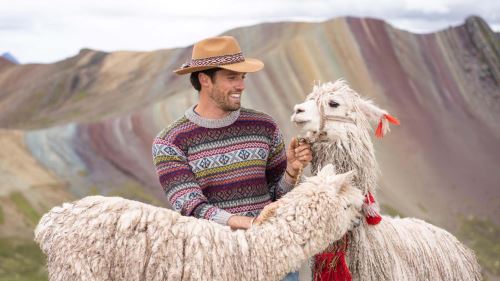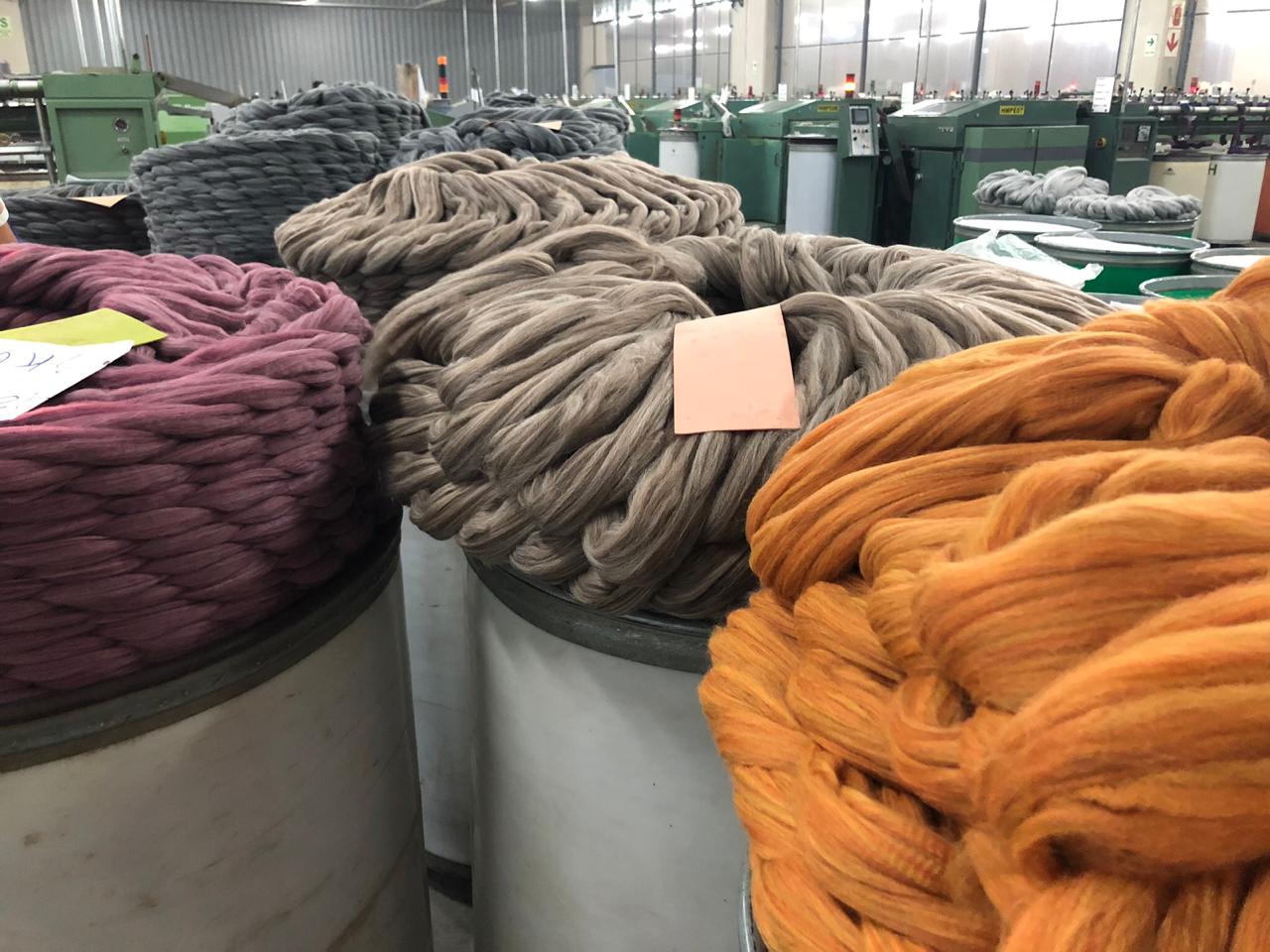
Understanding the Supply Chain of Alpaca Products: From Farm to Wholesale
When you slip on a soft alpaca sweater or wrap yourself in a luxurious scarf, have you ever wondered where it all began? At The Alpaca Factory, every piece tells a story that starts high in the Peruvian Andes and journeys through a carefully managed and ethical supply chain—designed to preserve the purity of the fiber and the livelihoods of those who produce it.
Let’s take a closer look at how alpaca products are made, from farm to wholesale.
1. It All Begins on the Farm
Our journey starts on small, often family-run farms nestled in the high-altitude regions of southern Peru. Here, alpacas have grazed for generations, cared for by communities who hold deep ancestral knowledge. These farms represent more than just fiber production—they’re the heart of a tradition rooted in respect for nature, animals, and people.
At The Alpaca Factory, we work directly with trusted alpaca fiber producers who share our commitment to ethical sourcing and sustainable farming. The alpacas are raised in natural pastures, and shearing takes place once a year with gentle, humane techniques that prioritize the well-being of the animal.
2. From Raw Fiber to Fine Material
After shearing, the raw alpaca fleece undergoes a meticulous sorting and classification process. The fiber is graded based on fineness, length, color, and softness—qualities that determine how it will be used in production. Our focus is on Baby Alpaca and Royal Alpaca, two of the softest and most coveted grades in the industry.
Once sorted, the fiber is washed and processed in environmentally responsible facilities, where we emphasize water efficiency and non-toxic treatments. This step ensures the material is clean, uniform, and ready for spinning into yarn or transforming into finished garments.
3. Spinning and Weaving with Purpose
Alpaca yarn production combines artisan heritage with modern technology. We work with mills that respect the artisan roots of the Peruvian alpaca textile industry while upholding international standards for quality and traceability.
Whether it's yarn for knitting or woven fabric for clothing, the texture, durability, and thermal properties of alpaca make it ideal for a wide range of garments. The goal at this stage is to preserve the natural beauty of the fiber while preparing it for skilled craftsmanship.
4. Crafting Garments with Care
The final stages of production include dyeing, cutting, sewing, and finishing—steps that transform raw material into wearable fashion. The Alpaca Factory collaborates with local artisans and manufacturers who apply generations of expertise to every stitch, ensuring the final product is not only stylish but durable and sustainable.
Our design team blends classic and contemporary aesthetics, creating garments that reflect both the elegance of alpaca fiber and the spirit of modern ethical fashion.
5. Wholesale Distribution with Transparency
Transparency and traceability are core principles of our wholesale model. Whether supplying boutique shops, fashion brands, or global distributors, we make it a priority to communicate where, how, and by whom our products were made.
By maintaining long-term partnerships with buyers and offering custom manufacturing solutions, we ensure our wholesale clients receive products that align with their values and quality expectations.
Why Traceability and Sustainability Matter
Every step of the alpaca supply chain has an impact—on people, ecosystems, and the longevity of the textile industry. That’s why The Alpaca Factory is committed to building a model that’s transparent, fair, and environmentally conscious.
By sourcing alpaca ethically, investing in sustainable practices, and honoring the communities behind our products, we offer more than fashion—we deliver integrity.
The Alpaca Supply Chain at a Glance
| Stage | What Happens |
|---|---|
| Farming | Alpacas are raised ethically by Andean families at 3,500–5,000 meters altitude. |
| Shearing | Animals are gently sheared once a year to preserve fiber quality and health. |
| Sorting & Grading | Fibers are classified by softness, color, and micron count (Baby/Royal Alpaca). |
| Washing & Spinning | Fiber is cleaned and spun into yarn in low-impact, sustainable facilities. |
| Weaving & Knitting | Yarns become fabric or garments via artisanal or semi-industrial processes. |
| Finishing | Dyeing, assembling, and packaging—all done with care and local expertise. |
| Wholesale Distribution | Products are shipped with full traceability and client customization options. |
How Does Alpaca Compare to Other Fibers?
| Feature | Alpaca | Wool (Sheep) | Cashmere | Synthetic Fibers |
|---|---|---|---|---|
| Softness | Very soft | Moderate | Extremely soft | Variable |
| Warmth-to-Weight | Excellent | Good | Excellent | Moderate |
| Hypoallergenic | Yes | No (contains lanolin) | Yes | No |
| Moisture Wicking | High | Moderate | Low | Low |
| Environmental Impact | Low (sustainable) | Moderate | Moderate | High |
Additional Insights: The Importance of Ethical and Sustainable Alpaca Production
- Preserving Biodiversity: Sustainable alpaca farming encourages natural grazing patterns that help maintain Andean ecosystems.
- Community Empowerment: Many alpaca farms are cooperatives or family businesses, ensuring that the economic benefits stay within local communities.
- Animal Welfare: Ethical sourcing guarantees humane treatment, including stress-free shearing and proper nutrition.
- Traceability: At The Alpaca Factory, we track every step to guarantee authenticity and quality—from fiber origin to finished garment.
Practical Tips for Wholesale Buyers
- Request fiber origin certificates to ensure ethical sourcing.
- Check sustainability practices of your suppliers, including water use and chemical treatments.
- Explore customization options for design, dye, and packaging that support your brand values.
- Verify traceability—knowing your product’s full journey can improve marketing and customer trust.
- Build long-term partnerships with producers to support stable income for farmers and artisans.
From the Andes to the World
At The Alpaca Factory, we believe in celebrating the origin of every thread. Behind each product is a chain of care, commitment, and culture that connects the Peruvian Andes to the global marketplace.
When you choose alpaca clothing from The Alpaca Factory, you’re not just buying a garment. You’re supporting sustainable alpaca farming, ethical production, and a more conscious future for fashion.





